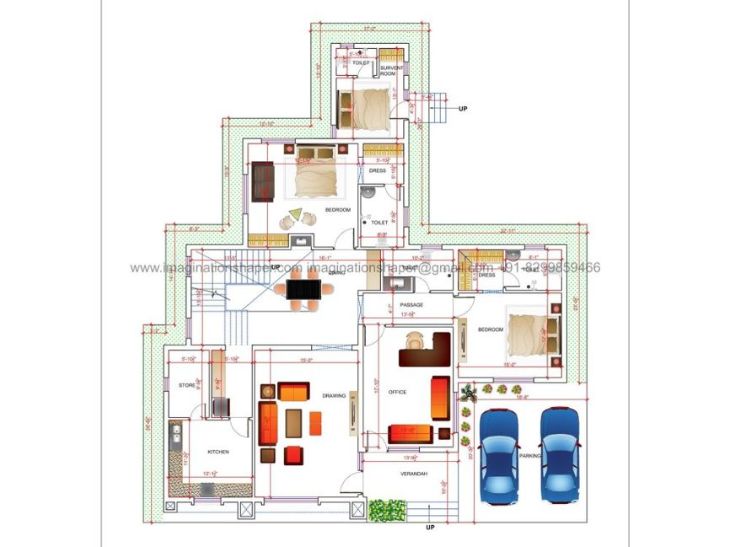Didn't find the right design, get a 100% customized design by our design expert.
Starting from 3999/-
Our Structural engineer consultant design service combines precision and inventiveness. Our skilled architects, interior designers, and engineers spent years collecting thousands of Structural engineer consultant. Our careful planning ensures practicality and aesthetics combine flawlessly. Look through our projects to see how technology and creativity can work together, and see what possibilities exist for your next project. We hope that these Structural engineer consultant collections help find right home quickly. If you need help narrowing down your selections, or would like suggestions based on your criteria, whats app chat, email or call us. We’d be happy to help you find the Structural engineer consultant that fits your lifestyle and budget. You can also check out our Specialty Collections or customized design service for more design ideas. Let's build your dream home together from designing to execution.

Get best customized house plan designed by experienced architects and designers.

Are looking for the elevation design services, Imagination would be the perfect option.

Home interior design to enhance the interior of the project services at an affordable price.

Design your health care project as per guidelines, the user and patient-centric also.

We incorporate sustainability strategies, creative space planning and best technology.

We are focused on combining function with style to meet the need of businesses.
If you are new to the construction of houses or buildings then you might have heard about house design plans but not structural drawings. Because the house design is common and anyone can understand it easily. But not the same with structural drawings. So let’s discuss what is structural drawings, their types, and what elements are included in structural drawings.
A structural drawing is a type of technical drawing that shows the structure of a building or object. It provides details about the dimensions, materials, and assembly of the structural components.
Some key things structural drawings show:
A structure drawing is an important part of the construction document.
There are several types of structural drawings are used in the construction industry. Here are the 7 most common types.
The first but the most important type of structural drawing is the foundation plan. The foundation plans show the layout, dimensions, depths, and details of foundations, footings, piles, etc. They include notes on required concrete strength, rebar, etc. The objective of the foundation plans is to ensure foundations are properly constructed to support the structure.
The second type of structural drawing is the floor plans. It provides the layout and dimensions of structural floors. The floor plans show the locations of beams, columns, walls, openings, etc. The objective of the floor plans is to erect and coordinate structural floors. From my personal experience, I can say that these structure drawings are very important for the construction. Our structure engineer in Lucknow was following these drawings while building our commercial project.
The next type of structural drawing is a roof framing plan. The roof framing plans show the structure of the roof system sizes, spacing, and connections of rafters, joists, beams, trusses, etc. It also shows details like roof slope, overhangs, and openings. The objective of the roof framing plans is to guide roof assembly.
Another important type of structural drawing is the section drawing. The section drawings are the cutaway view showing the heights of structural components, materials, assembly details, etc. The sections communicate 3D complexity in 2D drawings.
Elevations are another important type of structural drawing. It gives a view of exterior (or interior) structural faces indicating heights, materials, openings, etc. The elevation drawings are a way to visualize and construct facades.
Last but not the least is the detailed drawings. They are important types of structural drawings. The detailed drawings give you a magnified partial view illustrating connections, reinforcements, fabrication, installation, etc. The objective of a detailed drawing is to provide clear instructions for construction.
Schedule is a very important element in construction. The schedule has tables summarizing components like beams, columns, rebar, etc. with dimensions, materials, spacing, quantities, etc. These schedules help coordinate and estimate the entire construction project.
Apart from these 7 popular and common types of structural drawings, there are some other drawings. Structural framing plans, truss drawings, precast concrete plans, and other drawings may be included for more complex structures.
The role of a structure engineer is to analyze, design, and specify structural systems. Here are some of its roles in detail.
A structure consultant focuses more on advising, reviewing, and evaluating structures for construction. Here are some of the important roles of structure consultants,
Structural drawings contain the necessary information about construction in detail. These drawings provide all the accurate information to construct the structural system of a building. The structural drawings have this information,
Structural drawings are an essential part of the construction documents for a building project. They provide contractors and builders with the necessary information to accurately construct the structural system. Structural engineers prepare these highly detailed technical drawings according to relevant codes and standards.

